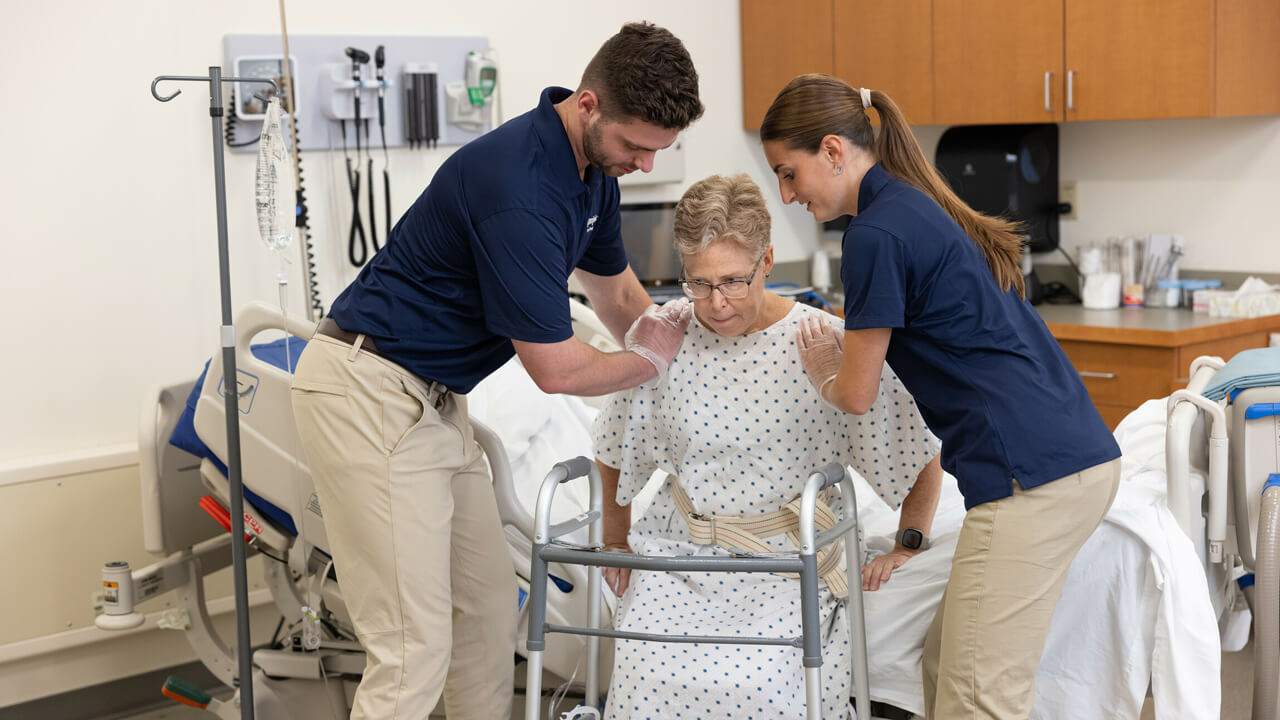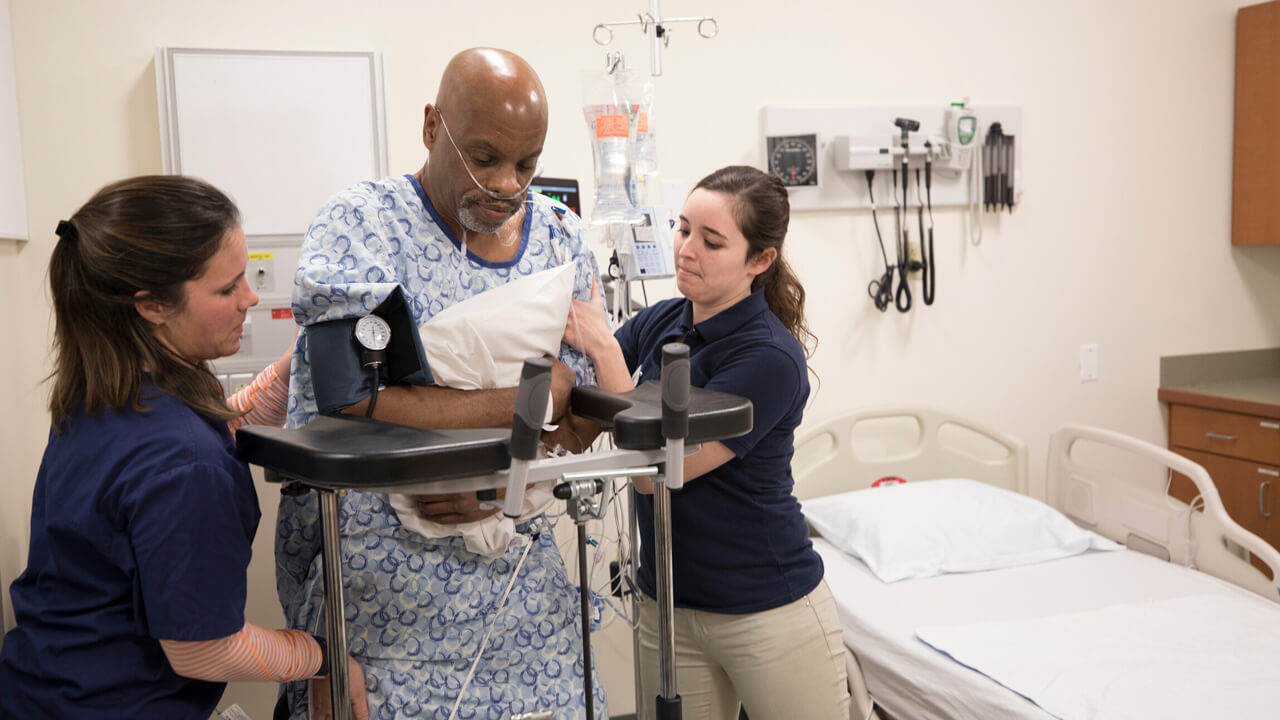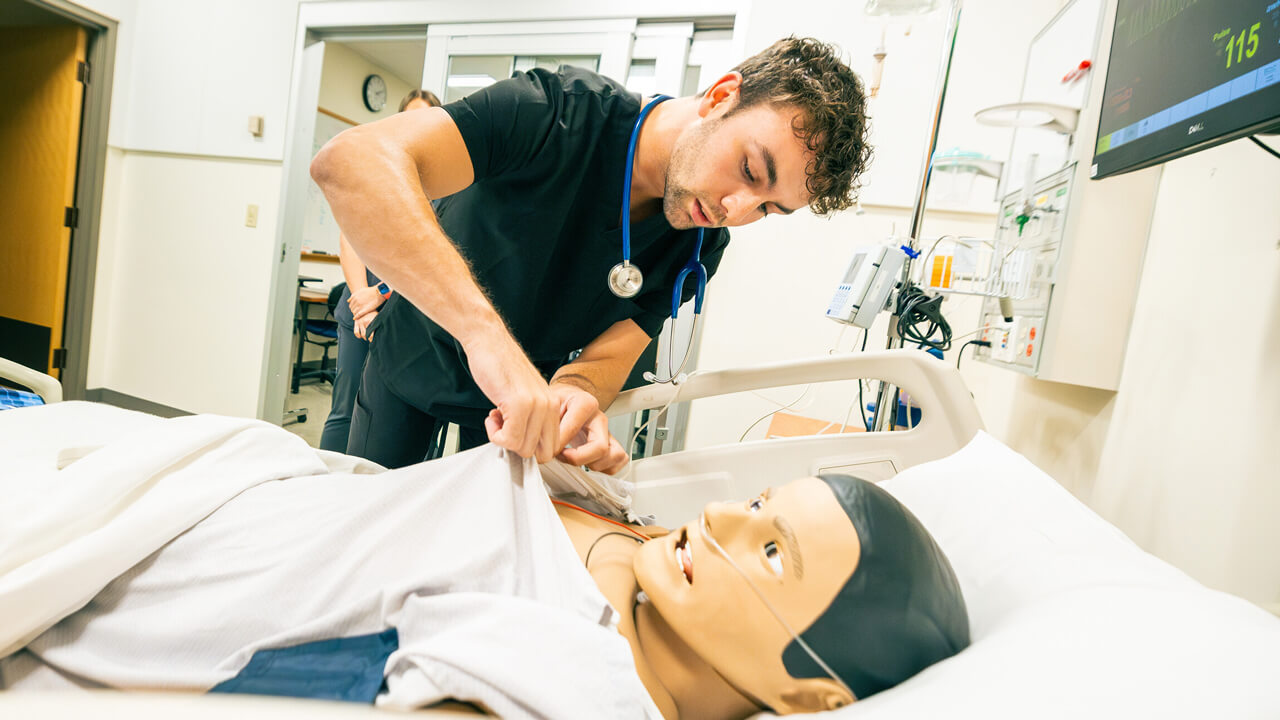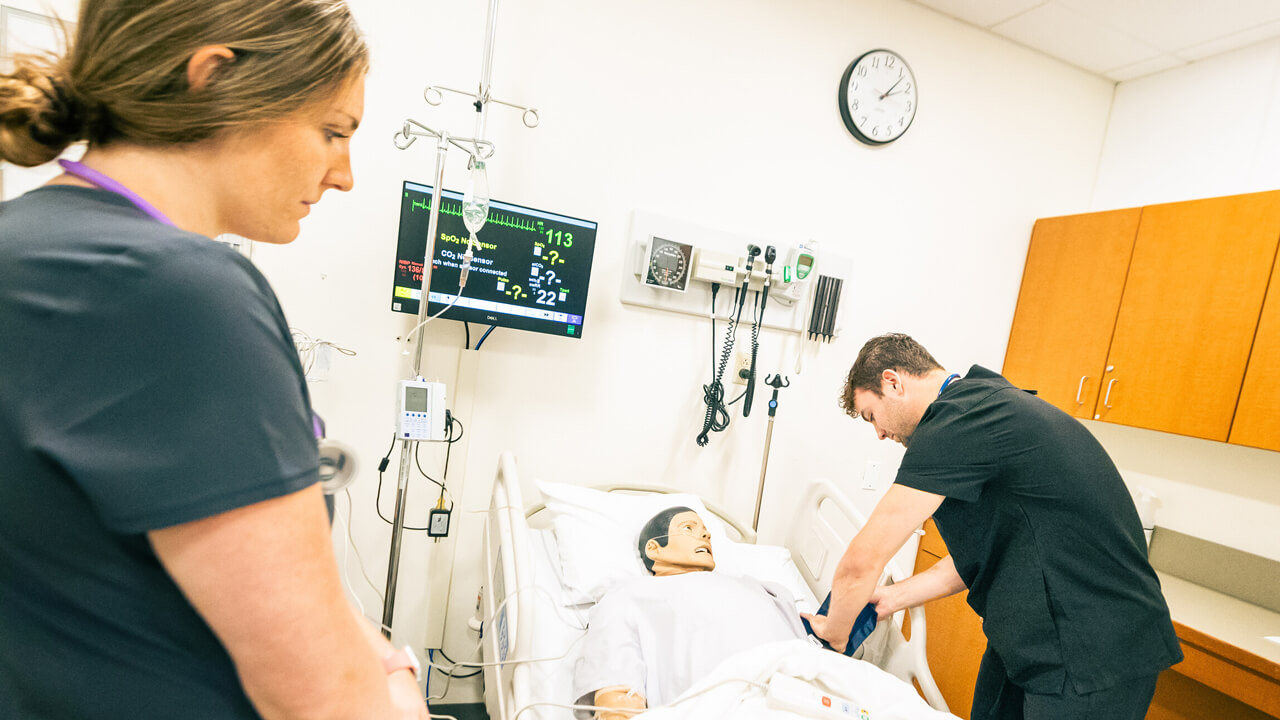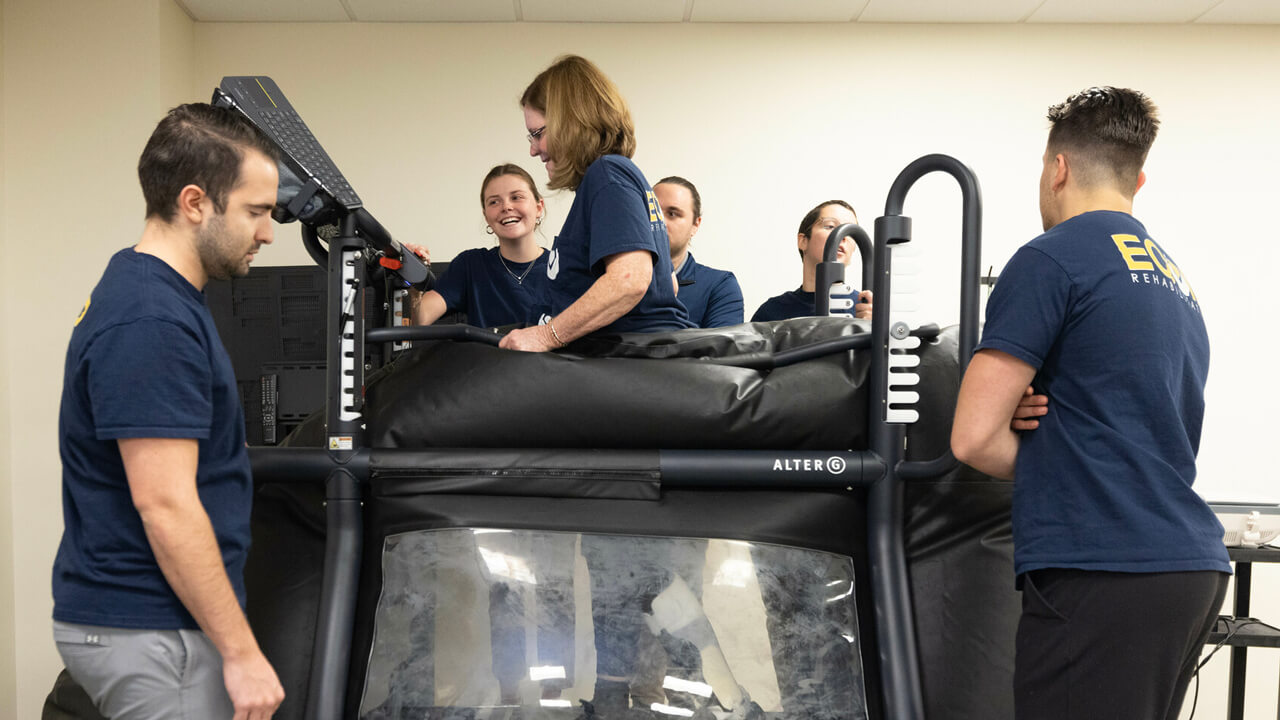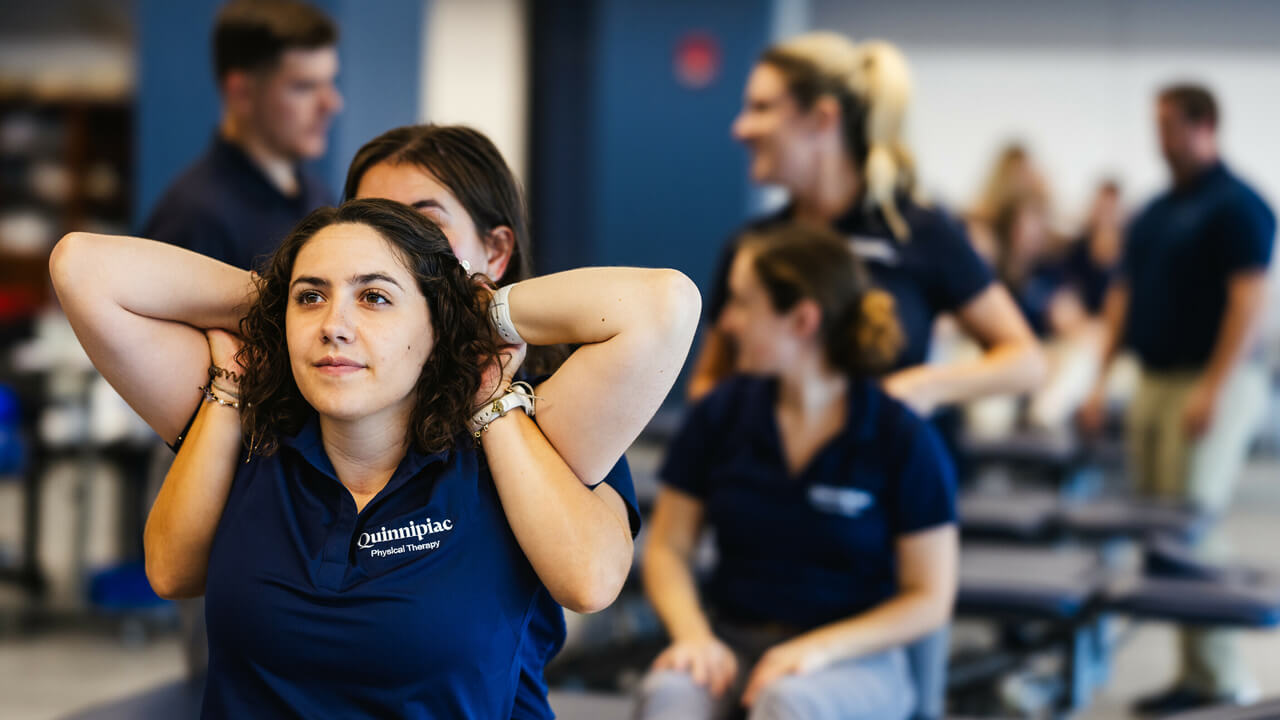Students in the physical therapy program begin simulation-based learning in the summer of their foundational year. They work with manikins, task trainers and standardized patients to develop and refine their examination and intervention skills.
In acute care cardiopulmonary courses, simulation experiences cover patient cases across the lifespan in the simulation laboratory. Students collaborate in small groups, learning with and from each other as they practice medical monitoring, managing lines and tubes, listening to heart and lung sounds, infant positioning and interpreting heart rhythms using telemetry. These sessions also emphasize patient- and family-centered communication skills.
In addition to classroom simulation-based learning opportunities, students participate in Observed Structured Clinical Examinations (OSCEs) at multiple points across the graduate curriculum. These practical examinations, done with standardized patients simulating real-world interactions, allow students to demonstrate their clinical competence before entering their fieldwork placements.

